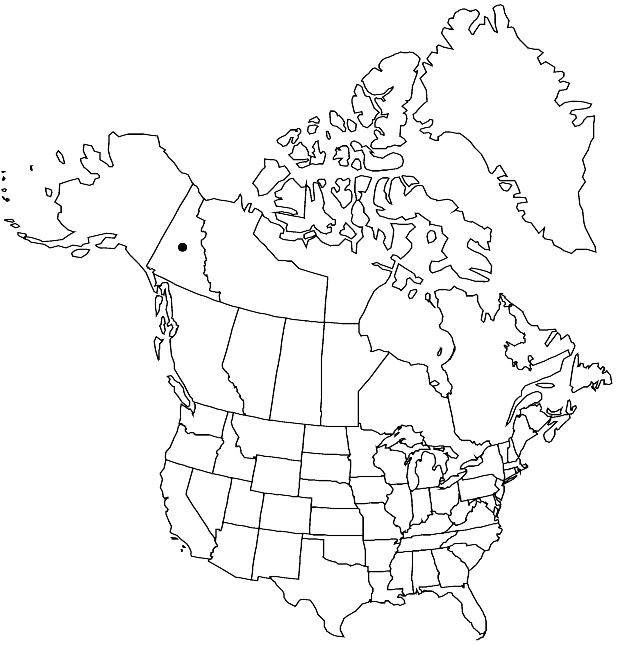Draba scotteri
Canad. J. Bot. 57: 1874. 1979.
Perennials; (cespitose); caudex simple or branched (covered with persistent leaves); scapose. Stems unbranched, 0.2–1.4 dm, pubescent throughout, trichomes 2–8-rayed, 0.07–0.4 mm, and, sometimes, simple ones, 0.2–0.8 mm. Basal leaves rosulate; petiolate; petiole base ciliate, (trichomes simple, 0.2–1 mm); blade oblanceolate, 0.4–1.5 cm × 1–3 mm, margins entire, (ciliate as petiole base), surfaces pubescent with short-stalked, stellate, 8–12-rayed trichomes, 0.1–0.4 mm. Cauline leaves 0. Racemes 1–9-flowered, usually ebracteate, rarely proximalmost flower subtended by a tiny bract, usually considerably elongated in fruit; rachis not flexuous, pubescent as stem. Fruiting pedicels divaricate-ascending, straight, 3–8(–12) mm, pubescent as stem. Flowers: sepals oblong, 2–3 mm, subapically pubescent, (trichomes simple); petals yellow, obovate to spatulate, 3.5–5.5 × 1.5–2.5 mm; anthers ovate, 0.4–0.5 mm. Fruits lanceolate to narrowly so, plane, flattened, 5–11 × 1.5–2.5 mm; valves pubescent, trichomes simple, 0.1–0.4 mm, occasionally with some 2-rayed ones; ovules 12–18 per ovary; style 0.3–1 mm. Seeds ovoid, 0.8–1.2 × 0.6–0.7 mm. 2n = 96.
Phenology: Flowering Jun–Jul.
Habitat: Talus and gravelly summits in alpine communities
Elevation: 1200-2000 m
Discussion
Of conservation concern.
The description of Draba scotteri is based on collections from Kluane National Park, southwestern Yukon Territory.
Selected References
None.
